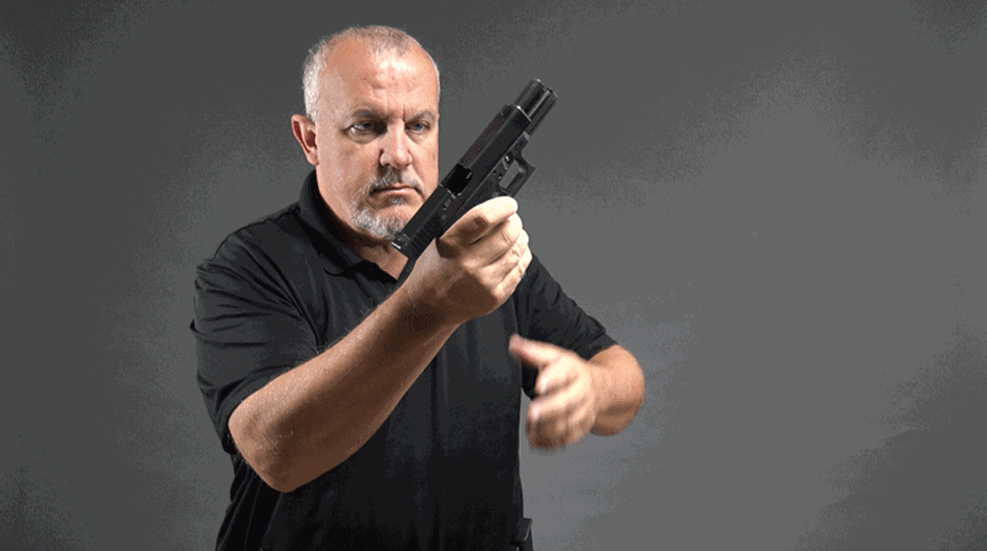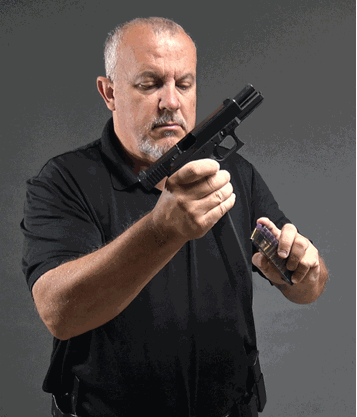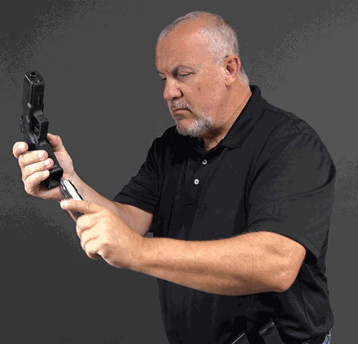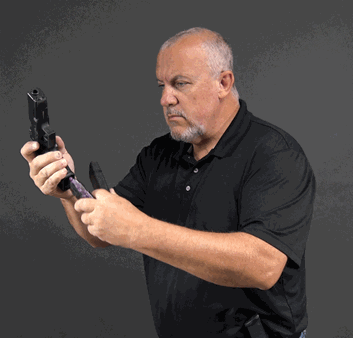
One of the things I push in all my firearms classes is the need to be well rounded in your skills. Many people spend astronomical amounts of time refining things like trigger press and sight management, but there is another skill we must master in the defensive-handgun realm. This skill is reloading, both emergency and tactical. In my opinion you can be the absolute best shooter in the world, but if you can’t execute a reload your training is deficient.
Reloads are undeniably one of the most essential skills a serious defensive shooter can have. With that in mind we will look at three different reload techniques to help you master the skill; the emergency reload and then two versions of a tactical reload.
Emergency Reload
The emergency reload has many names, but is always the same issue. The slide of the firearm is locked back and the magazine and the gun is empty. If you are in the middle of a self-defense scenario, this is indeed an emergency. The technique to get the gun back into operation is as follows:
- Bring the firearm up into your “work space.” This is an area near your chest which allows you to more easily manipulate it. You should still maintain your awareness downrange. Make sure the pistol is not past 45 degrees as it will begin to impede the drop of the exiting magazine.
- With your firing hand, press the magazine-release button. Simultaneously, reach back with your support-side hand and index your fresh magazine. You should make an effort to get as much of your hand round the magazine as possible. The base plate of the magazine should be in your palm. This allows for greater control of the new magazine.
- Pull out your new magazine and start moving it toward the mag well. If done correctly, the new mag and old mag will pass in mid-air.
- With the new mag in hand, insert the top of the magazine into the well. With one firm and smooth motion, drive the magazine into the grip. Avoid beating on the bottom of the magazine in order to get it to seat.
- Now that a fresh magazine is in the pistol, we need to get it back into battery. There are two methods to choose from. The first utilizes the slide stop. Point the weapon back downrange and with your support-side thumb, press down the slide lock. The spring tension in the gun will now run the slide forward and bring the gun back into battery. A second technique is called the “sling shot.” After the magazine is seated, grab the back of the slide with your support-side hand. With one quick motion pull the slide to the rear and release. The slide will now run forward and the gun will be back in battery.

Tactical Reload
A tactical reload is the replacement of a partially depleted magazine with a full mag. This is only executed when it is absolutely safe to do so. If you are ever in a situation where you have had to fire your defensive handgun, you will more than likely have no idea how many rounds you have fired. In that you should always expect multiple assailants, it is a good idea to get a full magazine into your gun as soon as possible. One debated idea revolves around what to do with the partially depleted magazine. I believe it should be retained. Unlike competition settings, most people do not carry a large number of magazines. In fact most people carry only one back up mag in their EDC. While there may not be many rounds left in the partially depleted mag, you may need them. There are two distinct schools of thought on the methodology used in tactical reloads as well. Each has their pros and cons. With that in mind, we will look at both.
Tactical Reload #1 – One Out, One In
- Bring the firearm up into your “work space.” This is an area near your chest which allows you to more easily manipulate it. You should still maintain your awareness downrange. Make sure the pistol is not past 45 degrees as it will begin to impede the drop of the exiting magazine.
- Bring your support-side hand to the base of the magazine in the gun.
- With your firing-side hand, press the magazine release and let the mag fall into the palm of your support-side hand.
- Take the partially depleted magazine and place it in a pocket. DO NOT put a half-empty magazine back into your mag pouch.
- Now transition your support-side hand from pocketing the old mag to grabbing a new one.
- Pull out your new magazine and start moving it toward the mag well.
- With the new mag in hand, insert the top of the magazine into the well. With one firm and smooth motion, drive the magazine into the grip. Avoid beating on the bottom of the magazine in order to get it to seat.
Tactical Reload #2 – Combat Version
- Bring the firearm up into your “work space.” This is an area near your chest which allows you to more easily manipulate it. You should still maintain your awareness downrange. Make sure the pistol is not past 45 degrees as it will begin to impede the drop of the exiting magazine.
- With the support-side hand, index a fresh magazine from your pouch and start bringing it toward the gun. The grip on this magazine will be different than in other scenarios. As opposed to being set in the center of the palm, the magazine will need to be seated between two of your fingers.
- Once the magazine is at the base of the gun, use your firing-side thumb to release the exiting mag.
- Let the partially depleted mag now drop into your palm and hold onto it with one or two fingers.
- Now angle your hand so the fresh magazine can be seated into the mag well.
- With one firm motion seat the new mag into the gun.

The position of the fresh magazine is debatable. Some advocate putting it between the pinky and ring finger while others teach index and middle finger. The factor that will influence your decision on this is the size of your hands and dexterity. When choosing the technique that suits you best, you must explore the fundamental pros and cons of each technique. The “one out, one in” technique is easy to execute, but does leave the firearm without a magazine for a longer period of time. The “Combat” version does allow less time without a mag in the gun, but it requires decent dexterity and hand size. The “Combat” reload was created when the most common weapon was the 1911. Slender single-stack magazines are much easier to manipulate than modern double-stack polymer mags. In the end you should try both and find the technique that fits you best.
The ability to shoot accurately and quickly is undeniably an essential skill in the defensive-firearms world. Equally important however is the ability to keep your gun in the fight. You should be as diligent with mechanical manipulations as you are with accuracy training. Only through this can you become a master of the defensive handgun.


































